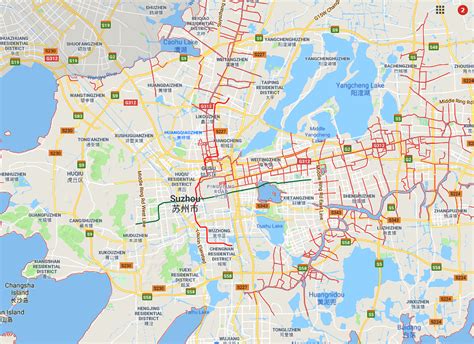Location: Suzhou 🌎
Location: Suzhou, China
Administration Region: Anhui
Population: 5352924
ISO2 Code: Anhui
ISO3 Code: CHN
Location Type:
Latitude: 31.3
Longitude: 120.6194
Suzhou (; Chinese: 苏州; Suzhounese: sou¹ tseu¹ [səu⁴⁴ tsøʏ⁰], Mandarin: [sú.ʈʂóʊ]), alternately romanized as Soochow, is a major city in southern Jiangsu province, East China. Suzhou is the most populous city in Jiangsu, and a major economic center and focal point of trade and commerce.
Administratively, Suzhou is a prefecture-level city with a population of 6,715,559 in the city proper, and a total resident population of 12,748,262 as of the 2020 census in its administrative area. The city jurisdiction area’s north waterfront is on a lower reach of the Yangtze whereas it has its more focal south-western waterfront on Lake Tai – crossed by several waterways, its district belongs to the Yangtze River Delta region. Suzhou is now part of the Greater Shanghai metro area, incorporating most of Changzhou, Wuxi and Suzhou urban districts plus Kunshan and Taicang, with a population of more than 38,000,000 residents as of 2020. Its urban population grew at an unprecedented rate of 6.5% between 2000 and 2014, which is the highest among cities with more than 5,000,000 people.Founded in 514 BC, Suzhou has had a long and productive history. Local museums host abundant displays of its relics and many sites of historical interest exist. Around AD 100, during the Eastern Han dynasty, it became one of the ten largest cities in the world, mostly due to emigration from northern China. Since the 10th century, Suzhou has been an important center of China’s industry and foreign trade. During the late 15th century to the 19th century, Suzhou was a national economic, cultural, and commercial center, as well as the largest non-capital city in the world, until it was overtaken by Shanghai. Since major economic reforms began in 1978, Suzhou has become one of the fastest growing major cities in the world, with GDP growth rates of about 14% in the past 35 years. With high life expectancy and per capita incomes, Suzhou’s Human Development Index ratings is roughly comparable to a moderately developed country, making it one of the most highly developed and prosperous cities in China.Suzhou is also famous for its classical gardens, date back to the 6th century BC, when the city was founded as the capital of the state of Wu. Inspired by these royal hunting gardens built by the King of Wu, private gardens began emerging around the 4th century and finally reached the climax in the 18th century.
Suzhou is also one of the top 50 major cities in the world by scientific research outputs as tracked by the Nature Index, and home to multiple major universities in China, including Soochow University, Suzhou University of Science and Technology, Xi’an Jiaotong-Liverpool University and Changshu Institute of Technology.The city’s canals, stone bridges, pagodas, and meticulously designed gardens have contributed to its status as one of the top tourist attractions and liveable cities in China. The Classical Gardens of Suzhou were added to the list of the UNESCO World Heritage Sites in 1997 and 2000. Suzhou is often dubbed the “Venice of the East” or “Venice of China”.

Top Suzhou HD Maps, Free Download 🗺️
Map
Maps
United States
United States
World Map
China
China









